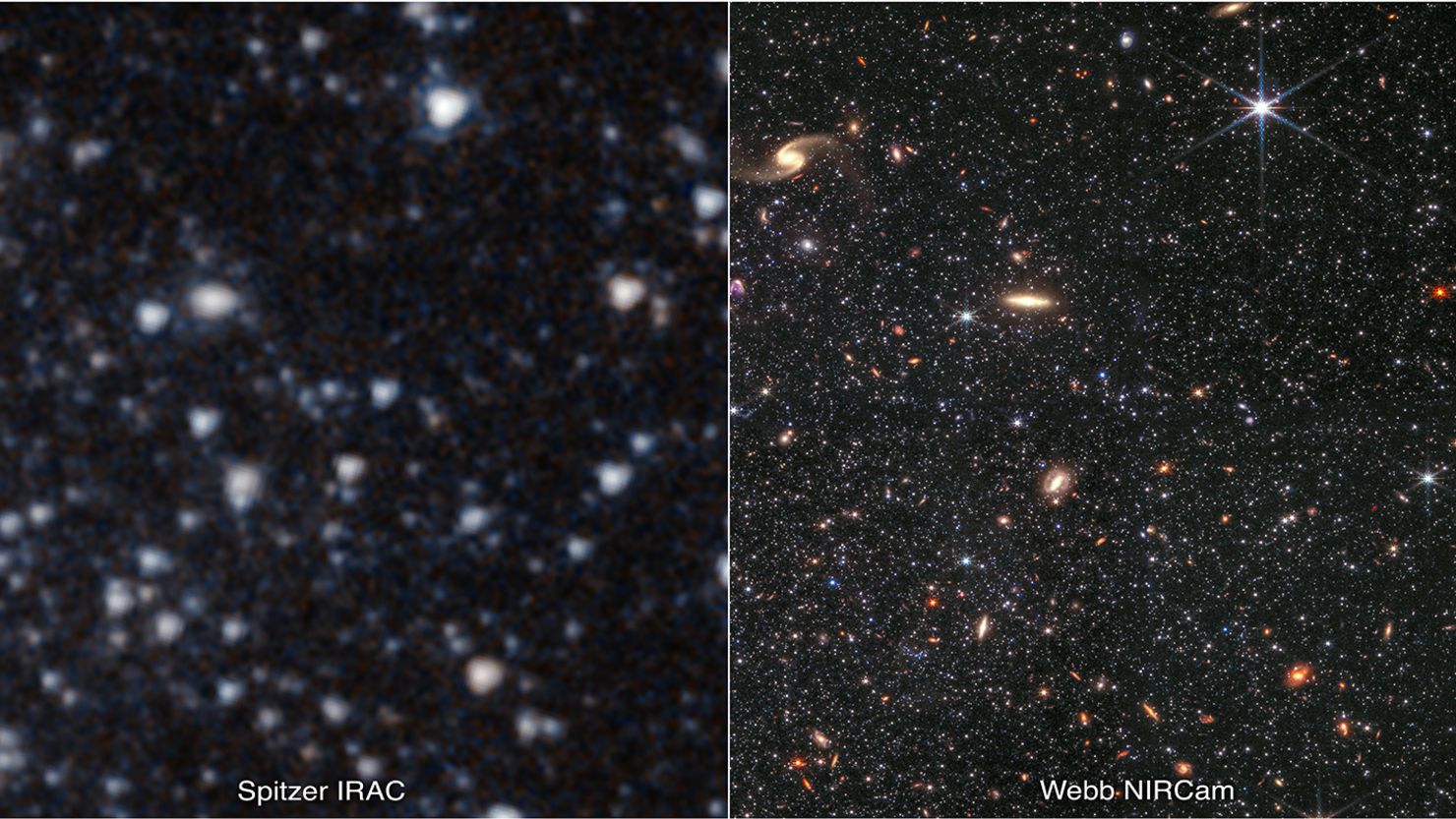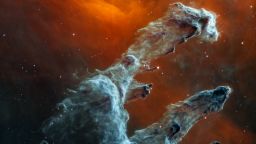Sign up for CNN’s Wonder Theory science newsletter. Explore the universe with news on fascinating discoveries, scientific advancements and more.
The James Webb Space Telescope has snapped a remarkably detailed image of a nearby dwarf galaxy. The near-infrared view reveals the deepest glimpse yet into a stellar panorama that could offer astronomers an ideal means of studying aspects of the early universe.
The image shows a panoply of stars within a lonely dwarf galaxy called Wolf - Lundmark - Melotte, which lies about 3 million light-years from our home galaxy, the Milky Way, and is about one-tenth the size.
The WLM galaxy is intriguing to astronomers because it has remained largely isolated and bears a similar chemical makeup to galaxies in the early universe, according to NASA.
The Webb telescope, which launched in December 2021, is the most powerful space observatory to date. It’s capable of detecting the faint light of incredibly distant galaxies as they glow in infrared light, a wavelength invisible to the human eye.
The Hubble Space Telescope and the now-defunct Spitzer Space Telescope have imaged the WLM galaxy, but Webb used its Near-Infrared Camera, also called NIRCam, to capture it in unprecedented detail.
“We can see a myriad of individual stars of different colors, sizes, temperatures, ages, and stages of evolution; interesting clouds of nebular gas within the galaxy; foreground stars with Webb’s diffraction spikes; and background galaxies with neat features like tidal tails,” said Kristen McQuinn, an assistant professor in the department of physics and astronomy at Rutgers University in Piscataway, New Jersey, in a comment posted on NASA’s website. A tidal tail is a thin “tail” of stars and interstellar gas extending off a galaxy.
“It’s really a gorgeous image,” added McQuinn, who is one of the lead scientists on the Webb Early Release Science program.
On Twitter, NASA’s official Webb telescope account declared that, compared with past space observatory images, Webb’s NIRCam image “makes the whole place shimmer” — a reference to the song “Bejeweled” on Taylor Swift’s new album, “Midnights.”
Some of the stars pictured in this latest Webb image are low-mass stars that were formed in the early universe and are able to survive for billions of years, McQuinn noted on NASA’s site.
“By determining the properties of these low-mass stars (like their ages), we can gain insight into what was happening in the very distant past,” she said.
CNN’s Ashley Strickland contributed to this report.




